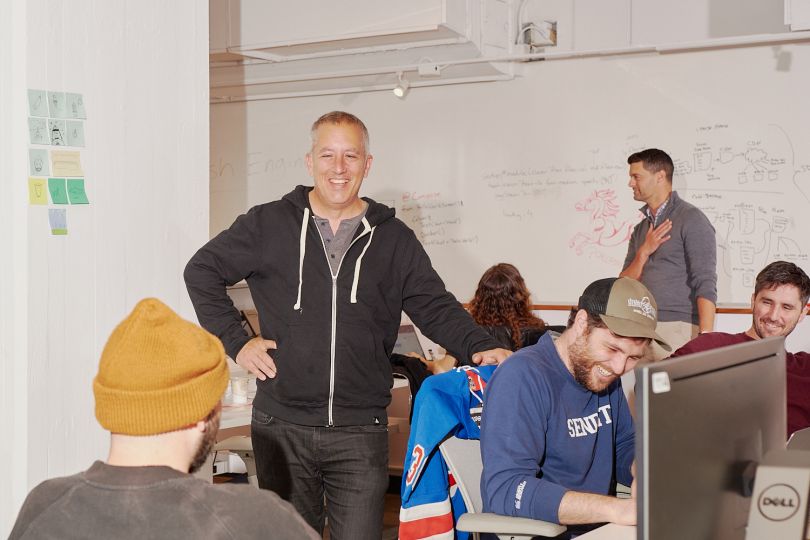As inflation soars and the shores of economic certainty are hammered by waves of high-profile tech layoffs, the average American is struggling to build a nest egg. In its 2023 Annual Emergency Savings report, Bankrate noted that nearly three in four people are saving less in these financially trying times, while more than two-thirds are worried about covering even a month’s worth of expenses.
But while many portend the untenable egg prices and climbing interest rates, pioneering fintech company Stash is taking proactive steps to strengthen the safety nets of American consumers. Equipped with its digital platform for investing and banking, the team is guided by a united purpose of democratizing financial services for those in need.
“Why wouldn’t I work in a company that affords me the opportunity to help several million customers build a stronger financial future?” VP of Product Management Jasma Ghai said as a matter of fact. “Especially to make a contribution while the company is on its growth trajectory.”
Hailing from a Fortune 200 background, Ghai knew firsthand the challenges that exist when a tech company can’t rally its troops. But the steadfast resolve of Stash employees to empower a better financial future for its customers was a refreshing break from what she’d seen in the past — she was all in.
True to the call of duty, Stash recently launched its Core platform, a completely revamped backend product that brings key aspects of its infrastructure in-house. With control over pivotal services such as continuous deployment and integration — and less reliance on third-party partners — the company is able to offer customers new levels of flexibility, speed and autonomy, whether they’re using the Stash’s Stock-Back® Debit Mastercard or its array of accessible brokerage and other banking and savings options.
Redefining Partnerships
In the past, Stash relied on third-party integration for much of its digital financial services. With Core, the company signaled a drastic move away from such dependence. However, this wasn’t so much a hard cutoff as it was a reexamination of the role industry partners would play in Stash’s future. The team eventually landed on Mambu for accounting structure and lettering, Marqeta for processing and Mastercard for its network.
Words on a press release rarely divulge the complexities under the hood; Stash Core is no exception. It’s precisely the ingenuity and immense undertaking required of the rollout that spoke to Andrew O’Toole, VP of engineering.
“I wanted to work on cool and interesting tech, but I also wanted to effect meaningful change in the world,” he said. “We have to be buttoned up in terms of having our engineering chops, but we are always trying to do right by the customer.”
Perhaps more than any other team, VP of Customer Ops, Kimberly Lerdall, and her crew could see the company’s North Star most clearly. After all, her dedicated team of customer-facing employees navigate inquiries and solve problems across external stakeholders and users on a daily basis. So it was all the more obvious to her that the Stash Core endeavor required incredible cross-functional unity. Building a huge feature while maintaining cohesion both internally and publicly is a challenge in itself, but Lerdall believes Stash’s mission statement assembled the right people, led by capable leaders.
“Our internal teams have shown a lot of incredible teamwork and empathy,” she said. “It matters when your leaders are concerned about listening to what customers are actually saying. It gets people motivated to solve the issues and prioritize the roadmap.”

The Power of Autonomy in People and Product
Ghai joined the Stash Core project when it was “in its most intense phases,” she described. O’Toole had just begun their initial development cycle, and the transition to owning their own ecosystem was a crucial point in the company’s growth. More than just a fresh coat of paint, the new platform powered two critical functions: a seamless customer experience and workflow independence for Stash’s internal teams.
From a client-facing perspective, Lerdall saw immediate improvements to public interfacing. “Having the control and ownership of our own tools and processes — disputes, card-shipping — meant in-house customer resolution,” she explained. “Building these from the ground up, our agents can quickly identify, research and solve customer issues.”
More importantly, the shored up infrastructure led to less customer complaint volume. “We saw such a small percentage of customers needing to reach out for help on setting up a new account or opening up a dispute. It speaks to the effort that went into the product journey.”
“Having the control and ownership of our own tools and processes meant in-house customer resolution.”
The Engine of Financial Innovation
Internally, the first-party infrastructure was born of a positive feedback loop where the tech stack — chosen for its speed and versatility — would enable similar benefits in the product. To provide Lerdall’s team with a more frictionless customer experience, O’Toole and his engineers adopted a similar philosophy in refreshing their tools.
“We use Go as our primary language on this specific project,” he said. “It’s super easy to pick up and run with it. We designed a training program where any new engineer who joins the platform doesn’t need Go experience.”
Split-Millisecond Decisions
With a boost in architectural efficiency, the engineering team can now adapt to Stash’s real-time banking ecosystem. In the past, banking processes such as linking and making deposits took several hours or days; now, every card swipe translates to a live decision on the company’s end. This new untethered autonomy meant the ability for O’Toole to scale his team with new SRE and NOC engineers to fulfill a wider scope of operations.
Going a step further, these underlying technological advances put power back into company hands and serve to harmonize cross-functional communications. Funneling feedback back into the CX and operations teams has become a more streamlined channel. More than just the speed, an entirely new toolset was built out so they can affect change and gain better insights into customer behavior.
“It’s really critical for CX and operations to have a process by which to escalate a problem directly to a team and establish clear communication,” O’Toole added.

Keeping the Mission Possible
The success of infrastructural reform such as the Core platform often hinges on the teams’ understanding and buy-in of a progressive vision. For Ghai, it calls for establishing pillars that ensure product teams can withstand the paradigm shift of a large-scale initiative.
As far as best practices, Ghai promotes setting clear objectives and results so the company’s squads — comprising engineering, product and design — have full transparency into the expected end goal of Core’s ambitious rollout. Hand-in-hand with granting insight into performance metrics is the push for more ownership and accountability. On a big-picture level, moving core pieces of the workflow in-house might be a logical next step. But it also entails more granular decision-making across the board.
“With a singular decision maker, you get the who, why and when of the process,” Ghai explained. “That can eliminate a lot of the red tape that comes with it.”
But beyond the processes and logistics, what truly enables the Stash Core platform to continually improve the customer experience, which is ever more important in economic uncertainty — is the mission. It’s empowered Lerdall to sit down with her team for the “voice of the customer” program and analyze public pain points.The frictionless collaboration continues to motivate O’Toole and his engineering colleagues as they develop the code that fuels the technical ship that ferries passengers to better fiscal outcomes. And it’s meant that Ghai can easily rally together a resolute crew of different product leaders and colleagues, eager to smash through the financial concerns of those in need.
“What keeps us true to our mission is that we always go back to our target population,” Ghai said. “That way, we can continuously reinforce, learn and iterate.”









